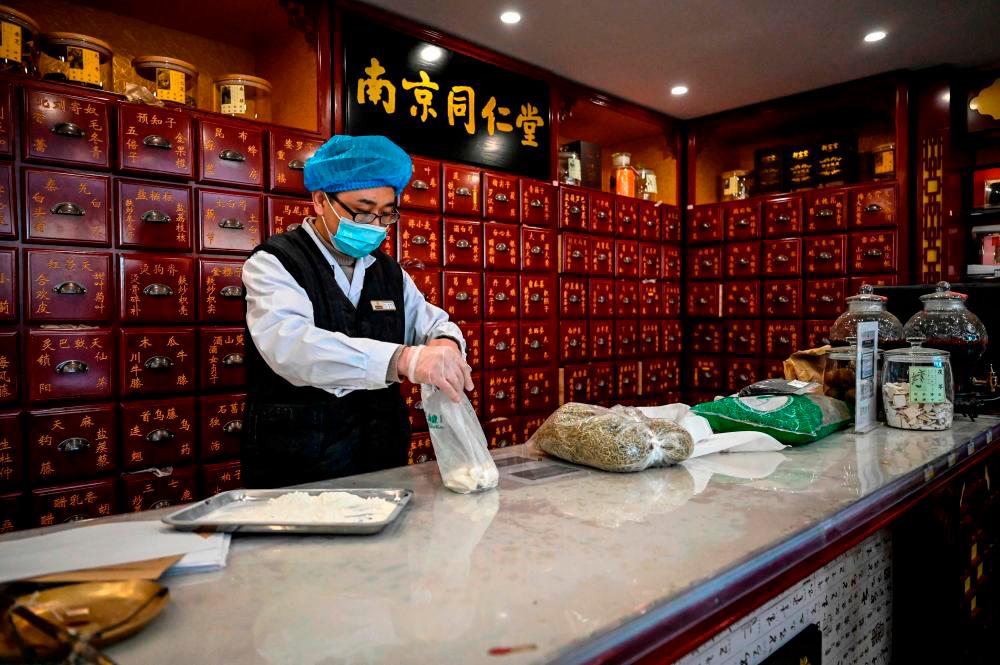PETALING JAYA: Traditional Chinese Medicine (TCM) is now well accepted by all races and is not confined only to the Chinese, said Federation of Chinese Physicians and Acupuncturist Associations Malaysia (FCPAAM) president Prof Dr Ng Po Kok.
However, he said while TCM is an ancient treatment practised in China for thousands of years to treat various diseases and illnesses, its practitioners are not called doctors in Malaysia, although they are recognised as such overseas.
“Our practice of treating patients using TCM is registered under the Traditional and Complementary Medicine (T&CM) Act 2016.
“The Act allows the establishment of a T&CM Council to regulate T&CM services and provide for matters connected with it,” he said.
Ng added that TCM does not focus on science and medicine. Instead, it is based on balance, harmony and energy.
“TCM is more of a healing art based on the theory of yin and yang and the five elements in the human body, which are earth, water, fire, air and ether.
“Yin refers to the qi energies (life energy or vital energy) that are night, dark, cold, feminine and negative, while yang refers to qi energies that are day, light, warm, positive and male.
“When one goes to a medical clinic, doctors diagnose the ailment and prescribe medication to treat it. But TCM practitioners prescribe medication for the patient’s entire well-being, so the treatment is more wholesome.”
Ng said through the use of its therapeutic modalities, TCM stimulates the body’s healing mechanisms.
“In TCM, an individual’s internal organs are thought of not only as individual structures but also as complex networks. According to TCM, qi flows through organ systems, such as kidneys, heart, spleen, liver, lung, gallbladder, small intestine and large intestine by way of meridians”.
Ng said Chinese medicine addresses the root cause of the disease whereas Western medicine sometimes can only address the symptoms.
“TCM treatment affects or changes the patient’s overall immune system. So, it can prevent future issues or recurrence of an illness that Western medicine is unable to address.”
Ng added that the initial diagnosis in TCM treatment is similar to how doctors do it in a clinic.
“Ancient TCM specialists have established four main diagnostic methods commonly called inspection (observation), auscultation and olfaction (listening and smelling), interrogation (inquiring or questioning), and palpation (pulse examination).
“However, when they start with the diagnosis, they will examine the patient’s skin, tongue and hair, as well as other parts of the body, from the brightness of their eyes to the colour of their nails, and check six pulse points on each of the wrists.
“The practitioner will also listen to the patient’s voice to assess their shen (spirit) and will work to determine if one or more of their organ networks are affected.
“The practitioner then tries to correct imbalances in the body by providing a combination of therapies such as acupuncture, moxibustion and herbal medication, among others,” he said.
Ng said aside from acupuncture treatment that is well-known, several other TCM treatment methods are known to be effective for certain illnesses.
“Practices used in TCM include acupressure, moxibustion, burning a herb near the skin and herbal medicine, among others. These practices are also useful for obese patients and those with problems related to cholesterol, diabetes, allergies and so on,” he said.
Ng added that TCM courses can be taken through local universities or universities in China that teach TCM as part of their syllabus.
“In Malaysia, there are 11 universities that offer TCM courses. They include Xiamen University Malaysia, International Medical University and INTI International University.
“Aside from that, FCPAAM also provides courses for TCM. We would invite TCM experts or practitioners to pass on their clinical experience to those who wish to learn and assist members to improve their academic level,” he said.









